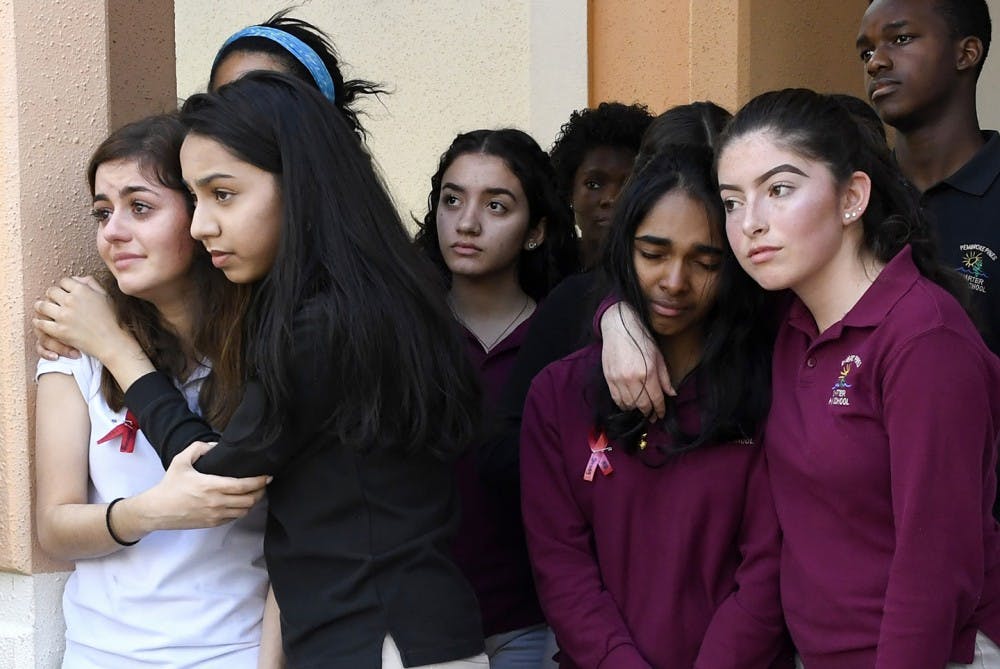The role of an artist in a community is as elusive as it is enigmatic. Completely open to interpretation and constantly evolving to fit the times, artwork in and of itself is one of the most undefined concepts we have as a society. Yet in the wake of tragedy — specifically events carried out by gun violence — we turn to art as though it is solid, as though it is a definite means by which to invoke change. We ask art to heal us and to bridge our divides and to transcend barriers. But are we expecting too much? What role does art actually play in gun violence tragedies, and what are its limits?
When news breaks, the initial information we consume is highly visual. We see photos of people — their immediate shock, grief and pain. We see moving images of care and chaos. The first thing, then, that art does for us following a tragedy, is tell the story. This is clearly effective; if art were not a vital component in developing stories, we would see many more pieces published without it. Words are concrete — we can get them wrong. Art, on the other hand, is pliable, flexible. Art can tell us what happened when we don’t have the words yet.
After the initial communication period is over, we transition into a phase of information influx and intense social reactions — also dependent on visual art. Graphics are a major component of representing data, often with the ultimate goal of informing the general public who may not seek the statistics or who may not have the knowledge to interpret the numbers they find.
Gun Violence Archive is a nonprofit, non-advocacy organization whose mission is to “document incidents of gun violence and gun crime nationally to provide independent, verified data to those who need to use it in their research, advocacy or writing.” Though not tied to any policy initiatives or social movements following gun violence crimes, the group largely communicates through concise visual displays of information.
Other organizations, such as The Brady Campaign to Prevent Gun Violence, do intend to mobilize their audience into action. They have created multiple videos on Facebook with simple text flashing on the screen of key points they want to get across to the public. One video following the Florida school shooting includes a photo compilation of the victims, pulling on our emotions — raw, just days after the tragedy — to push us into action.
Though perhaps not labeled “art” in the abstract, out-of-the-box sense, the passing of information and the mobilization of the public is heavily reliant on quickly-interpretable visual aids. With our loose definitions of the term, it is reasonable to say that these graphics qualify as art.
Social recovery is probably the most difficult phase in which to evaluate art’s role and effectiveness. The process of healing — both from personal and community standpoints — is messy. It is during this time that most of the creative work following a tragedy emerges. This is when people put fragments of themselves on paper, sidewalks and canvases in ways that can be cohesive or illogical, grand or subtle.
We saw it in Orlando after the fatal Pulse nightclub shooting when a local art store owner, Sam Flax, launched an initiative called “Paint Strong Orlando,” which accumulated about 300 paintings from artists and non-artists alike.
Flax intended to auction off the work to help the community, but according to Shannon McLellan, social media producer of clickorlando.com, “What Flax found, however, is that the artwork meant more to people than the money.” Rather than selling the artwork, it was distributed around the city as symbols of unity and peace.
Larger institutions have also used art to promote conversation. Though not explicitly linked to one tragedy, it is fair to say that the implementation of exhibitions addressing gun violence is a recent development. In December of 2016, the Indianapolis Museum of Contemporary Art (iMOCA) ran an exhibition called UNLOADED, featuring work from 19 artists that portrayed guns in different forms.
“The artists in UNLOADED visualize the power of the gun as icon and instrument, the damage it can do and how weapons might be rejected, broken or silenced,” iMOCA said.
So maybe art is reaching mainstream audiences on small and large scales, but the question remains: Does art actually mend us as a society?
Bradford Collins is a professor at the USC School of Visual Art and Design and his field of study currently focuses on contemporary art. He acknowledges that there may be some examples of public healing through artwork but says that is not where its true purpose typically lies.
“Art [in] the modern era, at least, is largely a tool for private grieving,” Collins said.
Collins has a point. It is true that many institutions have taken an active role in educating the public and igniting social change, and that creativity has brought together broken communities, but art is often, at its core, a personal exploration of emotion. Whether it goes on to impact others may simply be a side effect.
Art has healed, sparked conversation and informed, and still tragedies involving gun violence are prevalent.
But maybe it doesn’t matter so much if art initiatives result in quantifiable change or make clear definable differences in society, because all of these things about art — its intangibility, its hazy definitions, its lack of phonetic language — gives us room to hope. And maybe that hope, in the end, is all anybody is really asking for.

